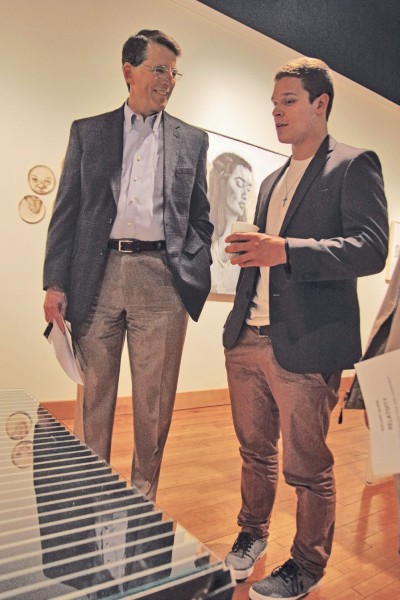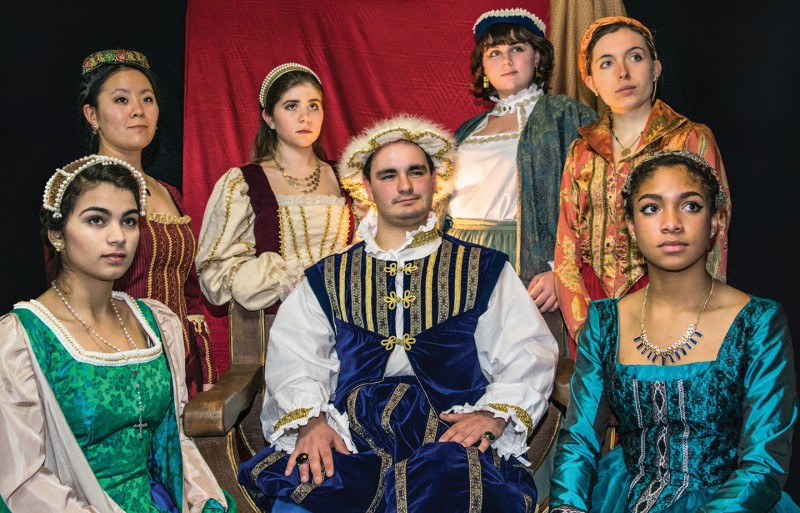Leader’s Letter
Art is Vital to Democracy and Life

When I reflect on my student experience on the campus of a small liberal arts college, I think about my major in history, the impact of faculty in a variety of disciplines, three years as a resident assistant, participation in student government, and a three-week volunteer experience in a Navajo community, where I met a fellow student, now my wife, Melissa Lollar. Though I was not a music major, the opportunity to sing in a college choir for four years also was important to me, as was serving as president of the choir for two of those years. Many of my closest college friends were choir mates. We rehearsed three times a week, learned a wide range of choral music, toured twice a year, and traveled to Europe for a month, my first time to travel abroad.
I think often of my choir experience when I contemplate the ideal college experience today. Robust participation in co-curricular programs is an important educational complement to the academic experience. Participation in the arts can both enrich the college experience and provide preparation for important vocational and avocational experiences that enrich all of life.
At Ohio Wesleyan, I see the benefit of student participation in the arts, both through the experiences of those who major in the arts and those for whom the arts provide co-curricular opportunities. Our music ensembles, theatre productions, and student art exhibits all provide a glimpse into the work our students accomplish in the arts. I experienced this firsthand a few years ago when Professor Jason Hiester invited me to sing with the OWU Choral Art Society for a semester. My section leader was a music major who now teaches music in California. Music is her vocation. In the baritone section, I took my place between a student who now teaches high school history and another who now is a medical student at Georgetown. For them, as for me, music is an avocation.
Melissa and I regularly attend productions in Chappelear Drama Center. Most recently we enjoyed a riveting performance of Royal Gambit, a play centered on the wives of Henry VIII (and, of course, the king himself). Cast members included theatre majors with promising future careers on and near the stage, and students majoring in other disciplines who value the opportunity to participate in the theatre. Vocation, and avocation.
The arts provide an outlet for creative expression that tests the limits of human understanding, that stretches the boundaries of human experience, and that confronts the realities of those parts of our shared journey that are inhumane and unjust.
President, Ohio Wesleyan University
One of the highlights for me each year is the senior art show, a juried exhibit of work created by our senior fine arts students and shown at the Ross Art Museum. Each year the opening fills the museum as fellow students, faculty, family members, and people from the community marvel at the creative ingenuity of OWU students. I regularly am overwhelmed by the range and quality of work presented by our students.
Nothing is more important to a healthy and vibrant democracy than a commitment to and appreciation of artistic creativity. The arts, whether experienced from on the stage or from a seat in the auditorium, at work in the studio or by viewing in the gallery, enrich individual human life and strengthen the fabric of our society. The arts provide a venue for the expression of human emotions in all of their forms – raw, sublime, brutal, beautiful, evocative, and serene. The arts provide an outlet for creative expression that tests the limits of human understanding, that stretches the boundaries of human experience, and that confronts the realities of those parts of our shared journey that are inhumane and unjust. Engagement with the arts is fundamental to the experience of being fully human. Thus, engagement with the arts is fundamental to the values of a liberal arts education. Vocation, and avocation.

Recently, the Ross Art Museum advisory board adopted a strategic plan designed to more fully align the museum with the strategic objectives of the University and to engage all disciplines on campus with the museum. In this issue of the magazine, we share the story of those efforts. As you read about the Ross, I invite you to think about the impact of the arts on your life, about the place of the arts in the curricular and co-curricular experiences of our students, and about the many ways in which our society is enriched by artistic creativity. I invite you to contemplate your own vocation, or avocation, with the arts.
![]()
Rock Jones
President, Ohio Wesleyan University
Twitter: @owu_rockjones
